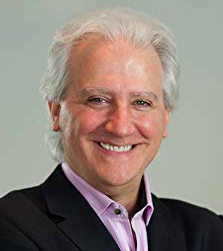|
Symphony
FROM THE NEW WORLD TO THE OLD WORLD
by Peter Lert
Saturday, June 14, 2025
Chamber
MC2 DUO RECITAL CLOSES 222'S SEASON
by Terry McNeill
Saturday, June 14, 2025
Choral and Vocal
CANTIAMO SONOMA'S LUSCIOUS A CAPELLA SINGING IN SEASON ENDING CONCERT
by Pamela Hicks Gailey
Sunday, June 8, 2025
Symphony
SRS SEASON ENDS WITH RESOUNDING TA-TA-TA-BANG
by Terry McNeill
Sunday, June 1, 2025
Symphony
YOUTHFUL VIRTUOSITY ON DISPLAY AT USO'S MAY CONCERTS
by Peter Lert
Saturday, May 17, 2025
Symphony
MYSTICAL PLANETS AND LIVELY GERSHWIN ORTIZ AT FINAL SRS CONCERT
by Peter Lert
Sunday, May 4, 2025
Symphony
VSO'S CONCERT MUSIC OF TIME, MUSIC OF PLACE
by Peter Lert
Sunday, April 27, 2025
VOCAL ELEGANCE AND FIRE AT THE 222'S RECITAL APRIL 26
by Pamela Hicks Gailey
Saturday, April 26, 2025
CANTIAMO SONOMA SINGS AN INSPIRED GOOD FRIDAY MOZART REQUIEM CONCERT
by Pamela Hicks Gailey
Friday, April 18, 2025
DRAMATIC SHOSTAKOVICH SYMPHONY CLOSES PHILHARMONIC'S 25TH SEASON
by Terry McNeill
Sunday, April 13, 2025
|
 |
 Composer and Conductor Gabriel Sakakeeny |
SAKAKEENY'S LION AND ROSE HIGHLIGHTS SO CO PHIL'S 20TH SEASON OPENER
by Terry McNeill
Saturday, September 22, 2018
Fresh from a triumphant tour in Latin America the Sonoma County Philharmonic opened its 20th season Sept. 22 in a celebratory concert in the Santa Rosa High School Auditorium.
Keeping to the evening’s orchestra history and past performance, conductor emeritus Gabriel Sakakeeny, who led the So Co Phil in a tour of China, was at the podium to direct one of his own works, The Lion and The Rose, which was composed in 1987 and premiered in 2008 in a concert in Santa Rosa’s Wells Fargo Center. Mr. Sakakeeny clearly has not lost his mastery of balances and orchestra color, and the work has a shimmering quality that grows larger as the 15-minute cantata unfolds. The stage was crowded with 29 singers from the California Redwood Chorale, the 49-member Philharmonic and the powerful mezzo-soprano Sophia Santulli.
In remarks to the audience of 200 Mr. Sakakeeny characterized the work as a “musical rendering of a poem that interprets the gradual relinquishing of mind and ego in the course of spiritual meditation,” and a “timeless experience of delight and awe.” Whether the composer’s musical description generated a clear conception is subject to some question, but it’s a beguiling work that flows easily to the ear and at several climaxes packs a potent sonic picture.
Throughout the picturesque piece novel instrumental effects were heard – wood block taps, harp and marimba chime-like notes, timpani and horn interplay. What were barely audible was the piano part (only in Shostakovich’s orchestra works can I hear the piano) and the Chorale standing stage rear. Ms. Santulli’s singing, often in melisma, mixed artfully in ensemble under the composer’s baton, and at the biggest climax actually soared over the orchestra. Her words “Thy Will Be Done” put a stamp of finality to a long crescendo of sound, leavened only slightly by the entry of the Chorale. Pam Otsuka’s violin solo blended beautifully with the playing from the harp (Christina Kopriva), marimba and Ms. Santulli’s elegant singing.
Audience reaction generated the loudest ovation of the concert, with Ms. Santulli and Mr. Sakakeeny beaming with delight center stage.
In his 20-minute pre concert remarks to the audience conductor Norman Gamboa suggested that though the works of the first half had substantial merit, they might be forgotten when the warm themes of Dvorák were heard and would stay in the mind while driving home. It was so. It’s interesting that since about 1960 Dvorak has increasingly been found on concert programs, similar to piano programs with Schubert. He is popular. The D Minor Symphony (No. 7) from 1885 is arguably the Czech composer’s best, and was supposedly written to mirror Brahms’ F Major Symphony. For me it’s an odd and wrong juxtaposition, as the Brahms Third is lyrical throughout, and the Dvorák darkly intense in its four movements.
Mr. Gamboa was at the podium for the Symphony and drew a cohesive and potent interpretation, surprisingly leading without score. Clearly he has a reverence for the music, even increasing the volume in the opening allegro maestoso to blaring climaxes that put drama into Dvorák’s wealth of thematic ideas. The key of D Minor for Mr. Gamboa is indeed drama and muscular sonority.
Rich thematic support continued in the adagio with lovely clarinet and bassoon solos, fine horn playing (Eric Anderson, principal) and concise repeated-note phrases from oboist Chris Krive. String playing in pianissimo was very good, set off by soft woodwind chords and string pizzicato. A captivating movement, played wonderfully.
Czech rhythms dominated the vivace-scherzo and there was less folksy flavor to the music than the composer’s usual scherzos. Mr. Gamboa brought out a sound that was extended and at the same time relaxed, and moved seamlessly to the allegro finale. Here there were strains of Brahms (Tragic Overture) in a chorale and theme played warmly by the cellos. Mr. Gamboa had his hands full in the tempestuous climax and change to a somber D Major, and the upper strings were stretched to keep up an even ensemble. However, he kept the momentum under control and led his orchestra to a driving, albeit dark, finish.
Henri Tomasi’s Fanfare Liturgiques opened the concert, a unique amalgam of brass playing (13 musicians) that was joined by the percussion section. There were solos galore in the 20-minute Suite, composed in 1942 and taken from Tomasi’s opera Don Juan de Mańera. Standout playing was everywhere: Floyd Reinhart’s tuba; Jeff Barnard's trombone in the Evangile section; the five horns and five percussionists; and trumpeter Tom Hyde. There was intriguing dissonance in several unison parts and jarring sound from two snare drum players. The chaste concluding Procession du Vendredi-Saint was played slowly and then became a final eruption of exalted orchestral sound.
Mr. Gamboa had sovereign control in this unique composition, as he did all afternoon.
|
